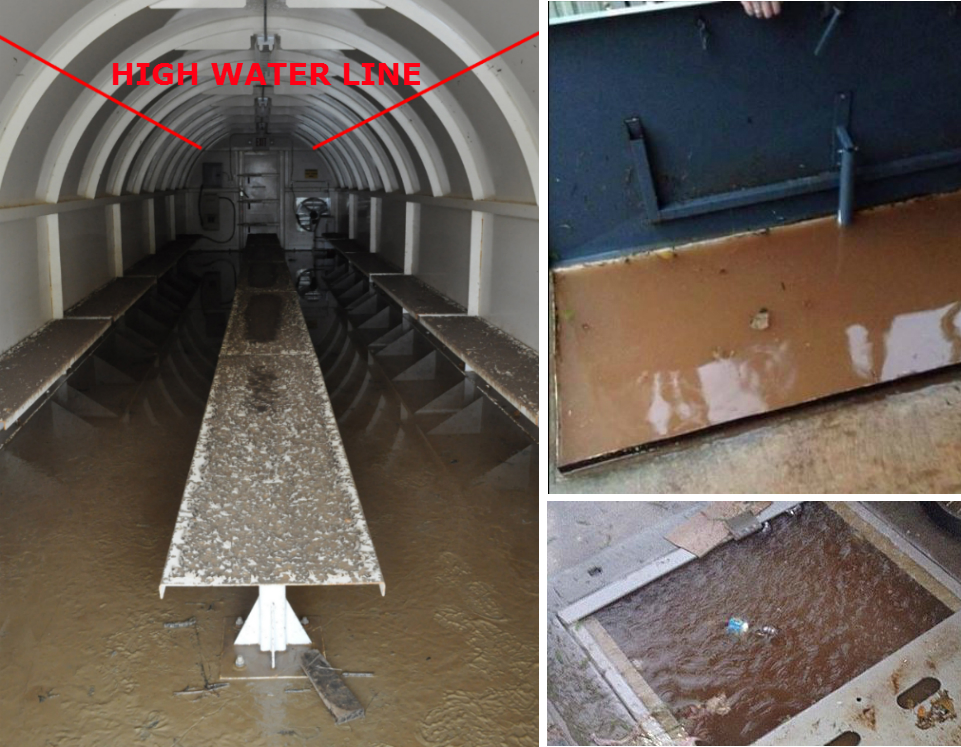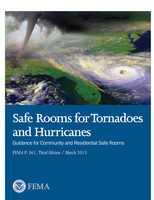The 3 ½” concrete slab issue is one that I have attempted to distance myself from because I spoke against it in the initial ICC-500 code committee and got resoundingly shot down by the rest of the group. Please allow me to explain the issue as I originally saw it and now that I know more, how it stands now.
Section 309.1.2.1 of the 2008 edition of the ICC-500 states”
Slabs on grade shall be designed for applicable loads in accordance with Section 301. Where a slab on grade is being used to resist loads, the minimum thickness shall be 3 ½ inches (88.9 mm) and the minimum steel reinforcement for slabs on grade resisting forces on the storm shelter shall be 6×6-W1.4 by W1.4 or No. 4 bars, 18 inches on center in either direction.
I was opposed to this language for one reason and one reason only. I knew when people (i.e. designers, engineers, manufacturers) read this, they believe that a 3 ½” slab will work for any type of shelter as long as it has the reinforcing indicated without the need to have it engineered. Low and behold, we have small residential shelters made of steel, wood, and other composite materials that are light weight being bolted to existing concrete slabs without doing any design work to confirm that the 3 ½” slab will work as required by the first sentence of the paragraph noted above! I knew it would happen!! I knew it!
I know of four competent, practicing structural engineers that have looked at this very issue and not a one of them could engineer a 3 ½” slab to work with these light weight shelters that experience the full wind load; NOT ONE!!! Why? BECAUSE IT DOESN’T WORK!!! The wind forces attempt to overturn these light weight shelters but doesn’t have enough “lead in its ass” to resist it so it depends on the dead weight of the concrete slab to resist the force. Problem is, the 3 ½” concrete slab doesn’t have enough “lead in ITS ass” to resist the force either!
With that said, there are exception to every rule. If you have one of the heavier shelters, i.e. fully reinforced masonry, and/or concrete, there may be enough dead weight in the walls and roof of the shelter to resist the overturning force. There are stipulations to this in the ICC-500, and only engineering will determine this. Shelters that are located in basements and do not see the full wind load may also be an exception, but again, this needs to be verified!
The latest version of the ICC-500 which has yet to be released has reworded this paragraph to hopefully emphasize the need for engineering these slabs. The problem is going to be, will pre-fab shelter manufacturers pick up on this and comply? Do you think Home Depot which sells shelters on the internet is going to make sure that you have an engineered slab on which to install your newly purchased shelter? I hardly doubt it!
So when you see manufactured shelters that say they can be bolted to an existing slab without any type of engineered verification, STAY AWAY! It is a must that there is enough dead load to keep the shelter from overturning, where ever that dead load comes from. It could be footings/foundations, thick floor slab (like 2’ thick), heavy walls, and/or roof structure. But bolting to an existing slab that is 3 ½” thick, or 4” thick is not going to cut it! You probably did not purchase a tornado shelter, you purchased a bad carnival ride! And one that could kill or serious injure you and your family.
Be careful out there!
Post by Corey Schultz, AIA, LEED BD+C



